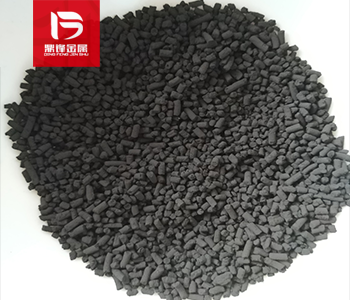
Palladium Carbon Catalyst Recycling
The recovery process leverages autoclave conditions to effectively extract palladium, with considerations for scale, efficiency, and environmental impact. Understanding the exact chemical reactions and conditions within the autoclave, as well as the comparative effectiveness of different recovery methods, is vital for optimizing palladium recovery and its industrial applications.
- Parameter
- Related Questions and Answers
-
Name : Palladium Carbon
-
Use : Hydrogenation,Catalytic Carrier,Dehydrogenation Refining,
-
Application Areas : New energy, environmental protection, fine chemicals
-
Appearance and properties : Black solid
-
Settlement Method : On-site payment
-
Recycling Type : Palladium recycling
-
Door-to-door recycling:worldwide
-
Customer service: Free content testing and door-to-door recycling
Palladium Slurry Recycling
Palladium slurry is a fine-grained substance that contains high concentrations of palladium metal particles suspended in a solvent. These palladium particles have nanoscale or submicron size and typically exhibit a gray or black appearance. The preparation process of palladium slurry can be achieved through different methods, the most common of which is chemical synthesis.is a fine-grained substance that contains high concentrations of palladium metal particles suspended in a solvent. These palladium particles have nanoscale or submicron size and typically exhibit a gray or black appearance. The preparation process of palladium slurry can be achieved through different methods, the most common of which is chemical synthesis.
Search : Palladium Slurry RecyclingPalladium Anode Mud Recycling
Palladium anode mud is a composite material derived from palladium and other alloying elements, primarily used in electrochemistry. It is valued for its excellent electrical conductivity, corrosion resistance, and stability, making it versatile in various industrial applications.
Search : Palladium Anode Mud RecyclingPalladium Aluminium Oxide Recycling
Palladium alumina is a catalytic material composed of palladium (Pd) supported on an alumina (Al₂O₃) carrier, usually in the form of highly dispersed metal palladium nanoparticles.Its composition includes:
Active metal: palladium (Pd), usually accounting for 0.1% to 10% (mass fraction)
Carrier: alumina (Al₂O₃), providing high specific surface area and stability
Additives (optional): such as rare earth metals or alkali metals, which can optimize catalytic activity.
Palladium Paste Recycling
Palladium paste is made by mixing palladium powder with binder and solvent. Binders are usually made from materials that bind palladium powder together, while solvents are used to dissolve the binder and create a paste that can be applied to the surface. Once the paste is applied, it is heated to dry and harden. Adhesive is a material that helps paste adhere to the substrate and can be made of various types of polymers or resins. This solvent is used to dissolve the binder and promote the spread of the paste on the substrate. The choice of solvent depends on the type of adhesive used, the viscosity of the required paste, and specific application requirements. Some additives can be added to the formula to improve the performance of palladium slurry. For example, surfactants can be added to increase the wetting ability of the slurry and improve its adhesion performance. Antioxidants can also be added to protect palladium particles from oxidation and improve the stability of the paste.
Search : Palladium Paste RecyclingProduct Details
The recovery of palladium-containing noble metal catalysts, particularly palladium carbon, involves a series of steps designed to extract and purify palladium from various forms. Here's a structured overview of the process and related considerations:
Recovery Process Overview:
Dissolution in Ethanol: Palladium carbon is dissolved in ethanol under negative pressure. Ethanol is chosen as a solvent due to its volatility and ability to dissolve small amounts of palladium effectively. The negative pressure aids in complete dissolution.
Autoclave Treatment: The ethanol solution containing dissolved palladium is transferred to an autoclave, a high-pressure, high-temperature chamber. Conditions within the autoclave are optimized to drive off ethanol and decompose palladium compounds, leaving metallic palladium behind. High temperatures may facilitate decomposition pathways that yield metallic palladium.
Filtering for Recovery: After the autoclave process, the recovered materials are filtered. Palladium, being magnetic, is separated from non-magnetic materials, ensuring a clean recovery.
Washing with Solvent: The reactor is washed with the reaction solvent (ethanol) to remove any unreacted compounds or impurities, ensuring the recovered palladium is pure and ready for reuse.
Recycling through Filter: Recovered palladium carbon is recycled via a filter, maintaining the integrity of the catalyst for reuse in future processes.
Additional Recovery Methods:
The recovery process also includes methods for extracting palladium from its various compounds:
Palladium(II) Oxide Recovery: Decomposition under reducing conditions releases metallic palladium.
Palladium(II) Chloride Recovery: Reduction with hydrogen or other reducing agents yields palladium.
Palladium(II) Nitrate Recovery: Reduction or precipitation techniques are used to extract palladium.
Palladium(II) Acetate Recovery: Deprotonation and reduction methods are employed.
Considerations and Implications:
Efficiency and Conditions: The autoclave conditions are crucial for effective recovery, with optimal temperatures and pressures ensuring complete extraction of palladium.
Byproducts and Purity: Monitoring for byproducts and ensuring high purity is essential to minimize impurities in the recovered palladium.
Environmental and Economic Aspects: Efficient recovery methods reduce energy costs and environmental impact, making palladium more accessible and sustainable. Economic viability is key, with cost-effective methods enhancing industrial applications
The recovery process leverages autoclave conditions to effectively extract palladium, with considerations for scale, efficiency, and environmental impact. Understanding the exact chemical reactions and conditions within the autoclave, as well as the comparative effectiveness of different recovery methods, is vital for optimizing palladium recovery and its industrial applications.
If you have any demand for the recycling of palladium containing precious metal catalyst waste, please call our 24-hour service hotline. Dingfeng Precious Metal Recycling and Refining Factory has its own recycling and refining factory without intermediaries to earn price differences. Our professional technical team and customer service personnel provide one-on-one services to ensure customer privacy during the recycling process.

